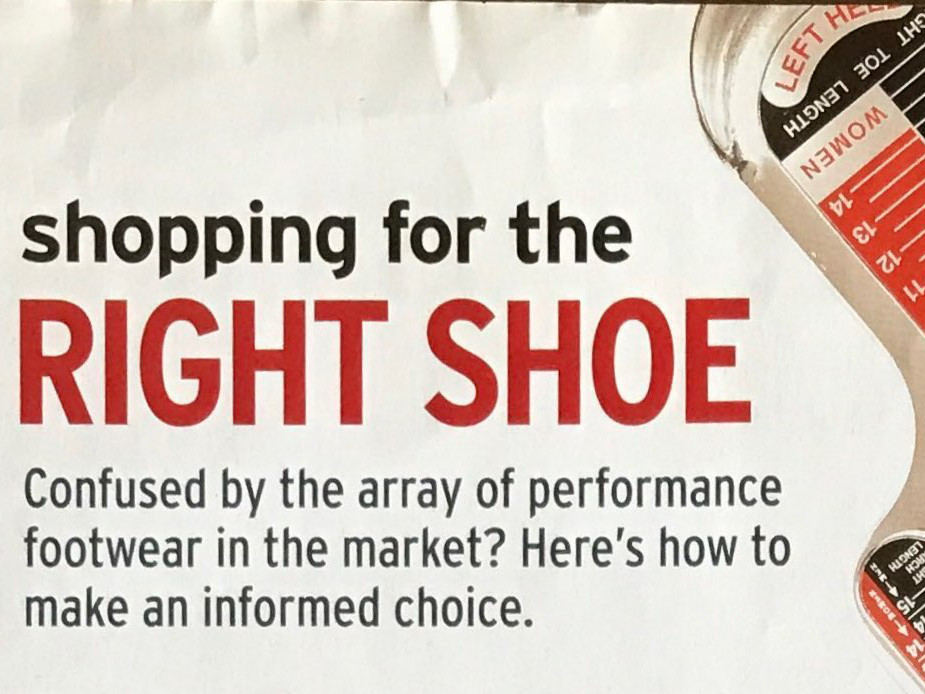Confused but the array of performance footwear in the market? Here’s how to make an informed choice.
“Fess up. You’re more likely to pick a pair of sports shoes because they match your workout outfit than for its function. Chua Wee Lee, adidas’s product manager, says, “I do think that generally, customers focus on price, design and colour, rather than what the shoe can do for them.” More often than not, you buy into the sexy advertising campaigns that gloss over technical information. Case in point: Many people buy a cross-trainer, thinking it’s an all-purpose shoe for all types of sports (it’s not).
When it comes to performance footwear, a fashion faux pas is the last thing you should be worried about. The wrong shoe could set you up for blackened toenails, abrasions, blisters, corns, calluses, bunions, heel pain, tendinitis, knee pain, and even lower back pain, says podiatrist Tye Lee Tze of The Podiatry Centre.
A well-trained store assistant would be able to help you zero in on a few good choices. New Balance has dedicated staff at its head office at The Comtech at Alexandra Terrace. Nike also ensures that new employees get on-the-job training. But, even with training, shop staff can only give you a general recommendation using various measuring devices. Nike product specialist Duane Wee admits that they won’t be able to accurately evaluate your foot type. “We recommend that a podiatrist be consulted for a more accurate analysis,” he says.
Help yourself
Jeffrey Chong, manager of Feder Sports Retailer & Wholesaler at Peninsula Plaza, says your best bet is to try before you buy. He is the retailer of choice for serious runners, including the MacRitchie Runners 25 group, and the expatriate running community.
“No two shoes are the same,” he says. When attending to clients, he asks about the type of running they do, measures their feet and observes their foot structure.
Philip Ho, technical representative cum assistant retail manager with New Balance, suggests the standing test. Stand with your feet about 15cm apart, and get someone to see if the backs of your heels turn in or out. If they turn out, you probably have flat feet that require shoes with motion control. People with high arches have heels that turn in. They usually need shoes that provide cushioning.
Fitting tips
- Feet can swell up by one full size during exercise, so go for a fitting in the late afternoon when they’re at their biggest.
- If you have different sized feet, always fit the shoe according to the larger foot.
- Always try on both shoes fully laced and walk or jog around the store to determine fit and comfort.
- Shoes shouldn’t need to be broken in to feel comfortable.
- Don’t assume a size 6 in one brand or style will be the same as a size 6 in another.
- There should be a thumb’s width gap between your longest toe and the tip of the shoe.
- The heel should not slide up and down excessively.
- The upper should not press tightly on any area of the foot.
Questions to ask at the store
- What kind of feet do I have -flat, high arched or neutral?
- Do the shoes you’re recommending fit my needs?
- Does the model you’re recommending fit my foot length as well as width?
- Can I try on a few different brands?
(Adapted from New Balance’s staff training kit)
By Khoo Bee Khim. Originally posted in SHAPE September 2005.

